OnePlus 6T Review
OnePlus 6T Review
Another great addition to the OnePlus family
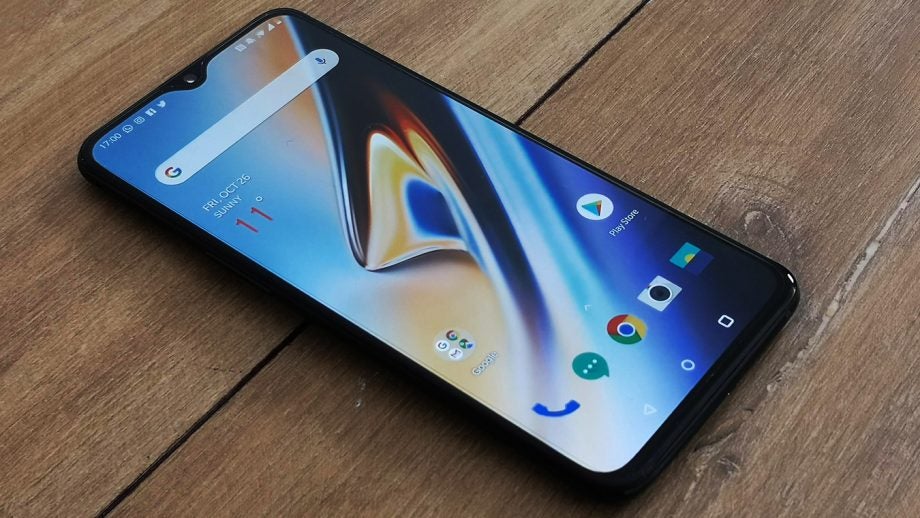
Verdict
The OnePlus 6T brings new technology and worthwhile improvements to the table making this the best phone from OnePlus yet.
Pros
- New fingerprint sensor feels cutting-edge
- Up-to-date, versatile OS
- Fast Charge is still great
- Sleek, premium design
- Great performance
- Great battery life
Cons
- Camera's Nightscape mode needs work
- Another headphone jack bites the dust
- Fingerprint sensor needs refinement
- Poor audio capabilities
Key Specifications
- Review Price: £499
- Dual SIM
- 6.41-inch AMOLED, 19.5:9 Full HD+ (2340x1080) display w/ Gorilla Glass 6
- Qualcomm Snapdragon 845 processor
- 6GB/8GB RAM
- 128GB/256GB storage. Non-expandable
- 16-megapixel front camera
- Dual 16/20-megapixel main camera
- 3700mAh battery w/ Fast Charge (20W)
- In-display fingerprint sensor
What is the OnePlus 6T?
When it comes to flagship phones, OnePlus has established a two-device-a-year strategy. Similar to Apple’s ‘S’ branded, OnePlus’ ‘T’ phones aim to offer a refined experience on their immediate predecessors.
Read our reviews of the OnePlus 8 and OnePlus 8 Pro
The OnePlus 6T looks to improve on the already excellent OnePlus 6 with a larger display, smaller notch, bigger battery and new fingerprint technology. Is it enough to take on Huawei Mate 20 Pro, Samsung Galaxy S9, iPhone XS Max and Galaxy Note 9?
While the OnePlus 6T has been replaced by both the OnePlus 7 and OnePlus 7 Pro, you can still buy it from the OnePlus site. Saying that the only models still available are actually pricier
OnePlus 6T – Design
The OnePlus 6 ushered in a new design direction for the company and its DNA runs strong within the 6T. Thanks to a slightly larger display, this phone’s footprint is fractionally bigger and it is a touch heavier but beyond that, changes appear slight.
The back is a swathe of curved glass 3D glass that sits comfortably against your palm. At launch the two colours: Midnight Black and Mirror Black, sport two distinctly different finishes. In my opinion, the Midnight Black model I tested is the better looking of the two, with a distinctive S-shaped reflection appearing across its back when the light hits it that has an almost opalescent quality.
Related: Best Phablets

It’s a nice effect and repels fingerprints better than most glass-bodied phones, but it also lacks grip as a result. The opposite is true of the Mirror Black version, which offers an inky black reflective finish that looks great until you touch it, after which fingerprints, smudges and smears run rampant.
OnePlus originally launched phones with more unorthodox material choices like bamboo and a roughly-textured polycarbonate called ‘Sandstone’. Now, such finishes have been relegated to OnePlus’ official cases but it’s a nice nod to the brand’s first devices.
The company’s signature physical alert switcher is an ever-appreciated inclusion that lets you toggle between silent, priority and loud, as well as letting you check what state your phone is in without having to wake it up – it’s immensely satisfying to use. There’s USB-C at the base, as the company has offered for a while now, but for the first time, it’s decided to nix the conventional 3.5mm headphone jack.
[videoai]While this seems to be the way things are going and OnePlus is decidedly on-trend for making such a move, there doesn’t appear to be any logic behind it. The only reasons I can think of as to why OnePlus would have to remove it would be to accommodate the large new battery or the additional fingerprint sensor components, but that’s pure guesswork.
Thankfully, unlike the iPhone XS unboxing experience, you’ll find a headphone jack adapter in-box that is, of course, coloured in the brand’s signature white-on-red livery.
OnePlus 6T – Screen
The 6T packs the biggest display OnePlus has ever put on a phone. At 6.41-inches it’s sure to satisfy media-lovers, mobile photographers and gamers. The extended Full HD resolution renders everything with perfect sharpness and colours only really suffer from distortion at the most unusual of angles.
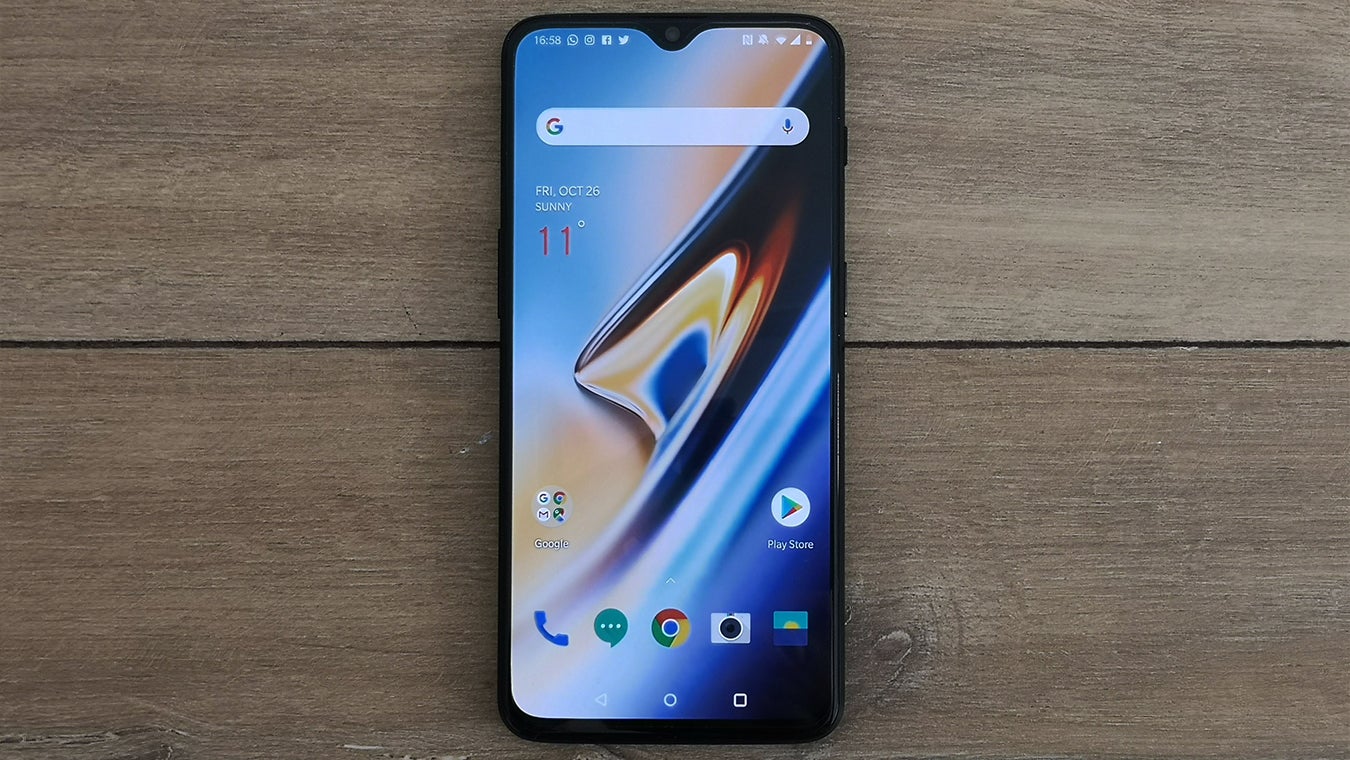
As with its predecessor, the 6T supports the full DCI-P3 wide colour gamut and the company’s thrown in options for a variety other colour spaces too, such as sRGB, as well as a warm night and monochrome reading mode feature. The use of an AMOLED panel is appreciated too, ensuring great contrast and deep blacks, which again helps when enjoying video.
We’re yet to see HDR support on a OnePlus device and I wonder whether it has anything to do with the brightness output of the displays the company uses. While I didn’t have any real issues using the OnePlus 6T in bright environments, other phones definitely go brighter. What’s more, with adaptive brightness enabled, the phone would regularly set the screen too dim based on the surrounding light. Assuming this issue isn’t localised to my experience, OnePlus can easily rectify this with a software update. HDR support meanwhile, will likely have to wait for a future device.
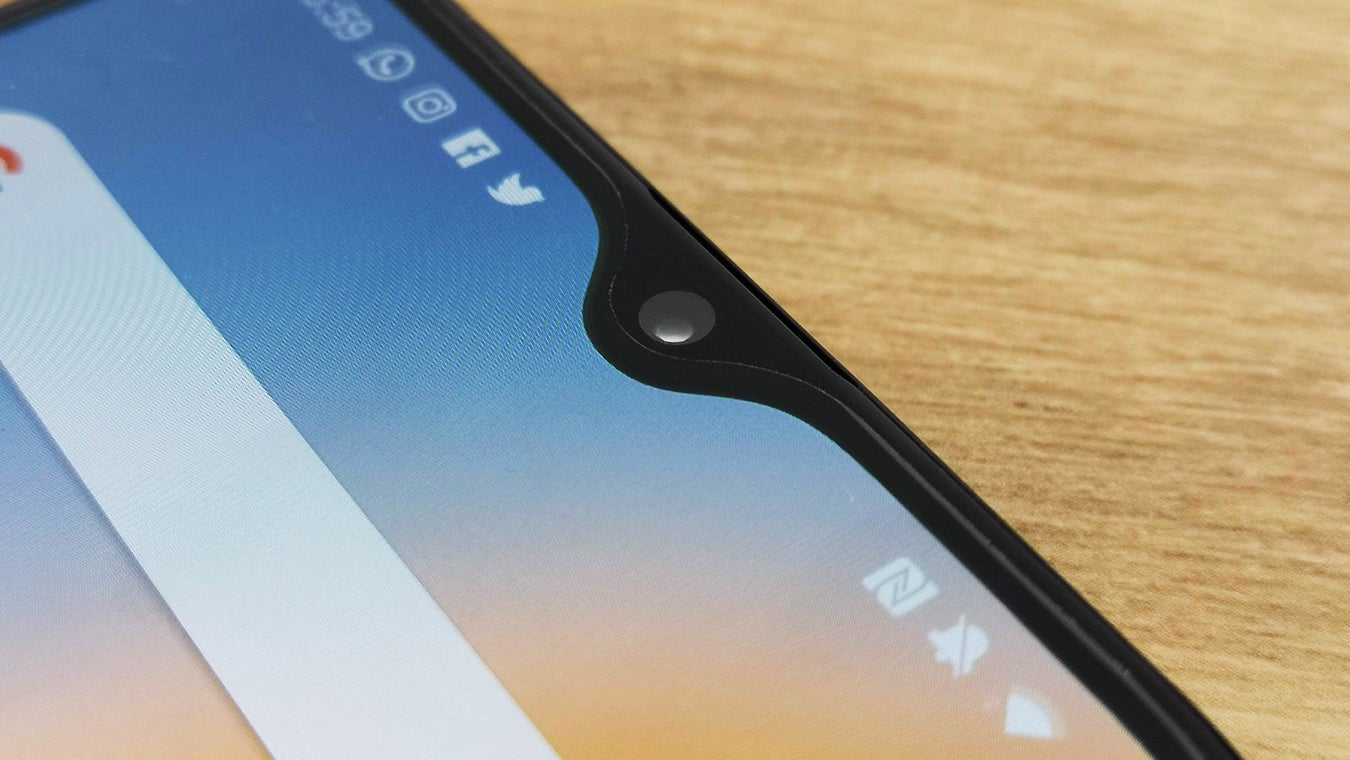
The OnePlus 6 was our first taste of a notched screen from the company, with the 6T, the notch is less-intrusive and far more aesthetically pleasing. Similarly to the Oppo F9 or the ‘dewdrop’ notch found on the Huawei Mate 20, the top bezel of the phone features a small rounded divot that neatly conceals its 16-megapixel front-facing camera and earpiece.
The 6T does support face unlock but this is solely achieved using that single RGB camera and thus far less secure than the IR dot projection method used by the likes of Apple’s Face ID. Thankfully, while you still have the option of face unlock, you’re not limited to it.
In a play that keeps the 6T as part of the cutting-edge smartphone crowd, the phone also integrates an in-display fingerprint sensor. A stylised fingerprint icon appears on the lock screen when you lift the phone up and after a firm press, the phone unlocks as you’d expect.
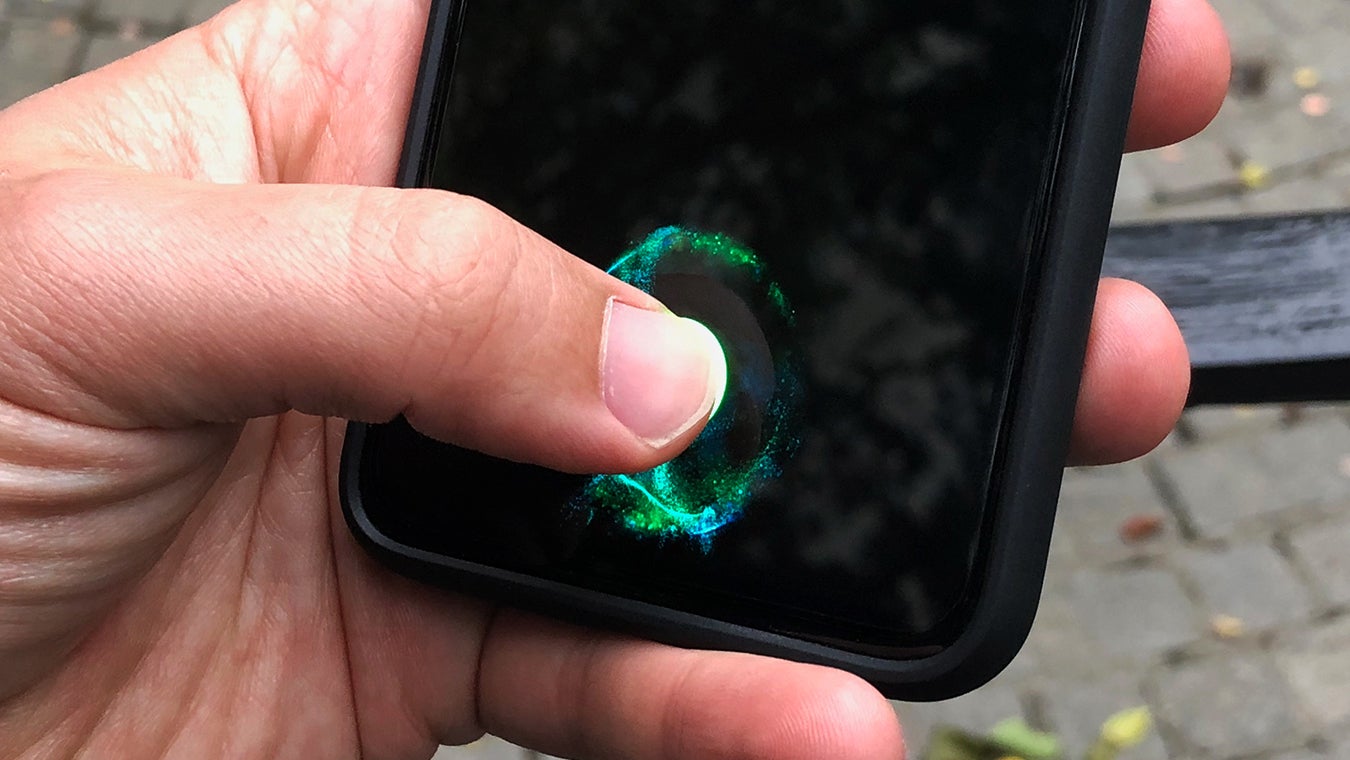
The feature sounds cool, but it isn’t perfect and I put that down to the infancy of the technology on offer rather than any failing on OnePlus’ part. The previous phone’s rear-mounted solution was undoubtedly faster but it added seams to the design and it would seem that OnePlus considered that a problem, or simply antiquated.
The new concealed optical sensor is definitely a touch less reliable than its predecessor, but it feels very cool to use. Right now you can customise the animation that goes along with the unlocking process and OnePlus has alluded to implementing a special shortcuts menu, accessed by continuing to hold your thumb on the screen as you unlock the 6T – a feature that’s yet to be implemented but I hope gets pushed to the phone soon.
Related: Best Android Phones
OnePlus 6T – Performance
The ‘T’ series phones, like Google’s Pixel phones, come at an awkward time if you’re after the latest and greatest mobile processor on the market. The Qualcomm Snapdragon 845 chipset at the heart of the OnePlus 6T is an undeniable powerhouse, that’s featured in nearly every 2018 flagship Android phone but it’s about to be supplanted.
With Qualcomm’s upcoming Tech Summit scheduled for early December, we’ll likely get eyes on the 845’s replacement, with phones sporting this new flagship chip by Easter 2019. That’s still a few months away but just knowing it’s on the cards sours the use of an 845 ever so slightly.
Back in the moment, the OnePlus 6T is anything but a weakling. The phone performed excellently during our competitive benchmarking tests.
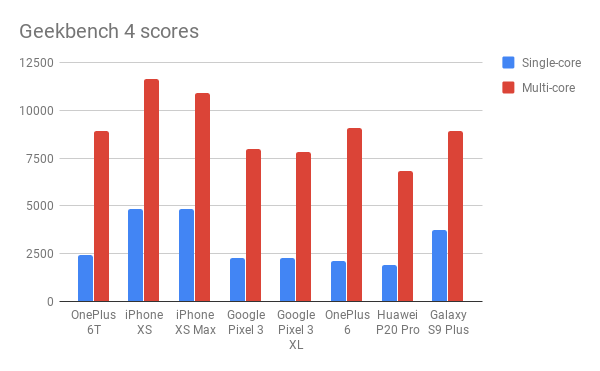
All results achieved using a OnePlus 6T with 8GB of RAM
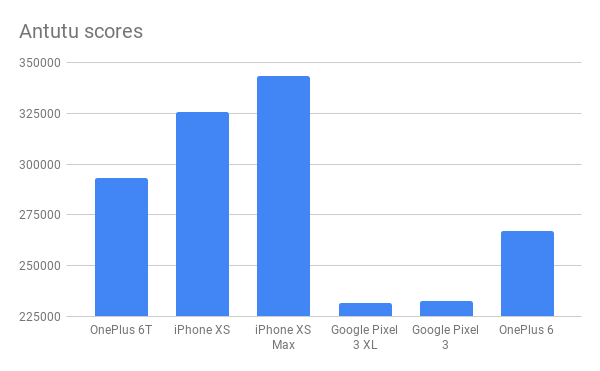
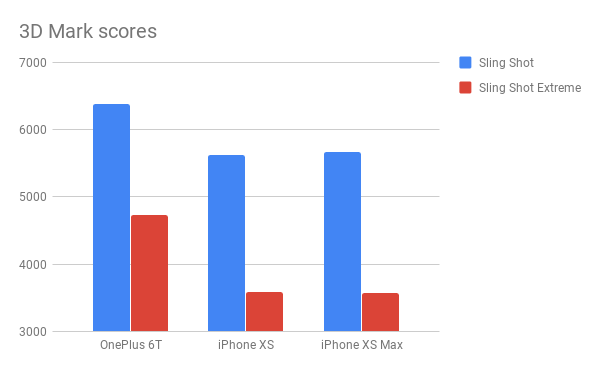
With real-world use that means faultless fluid performance. Whether you’re swiping around, streaming video, multitasking or gaming the OnePlus 6T is more than powerful enough. Speaking of gaming, OnePlus has augmented gaming performance with its dedicated gaming mode. It’s similar to experiences on rival smartphones, not only letting you manage call and notification behaviour but also limiting the background network usage of other apps and optimising CPU, GPU and memory performance each time you launch a game.
You could turn the feature off if you wanted and you have fine-grain control over how it behaves but for the most part, it’s best left to do its thing.
Another fire-and-forget feature adjacent to gaming mode is OnePlus’ new Smart Boost functionality. Buried away in the phone’s settings menu (under ‘OnePlus Laboratory’) and enabled by default, Smart Boost analyses your usage and starts to proactively reallocate memory resources to help keep the phone feeling fast. It’s again hard to test what it’s like without a feature like this enabled without testing it over a matter of months but I’m glad it’s there out the box.
As for call quality, the earpiece is a touch on the tinny side which might be down to its new position up against the top-most fringe of the phone’s bezel, but it’s wholly usable and background noise suppression seems decent – with recipients confirming that I was coming through loud and clear, despite walking down the noisy streets of New York.
OnePlus 6T – Software
OnePlus was among a handful of manufacturers that promised to deliver fast Android updates and with the OnePlus 6, it certainly delivered. The OnePlus 6T runs an enhanced version of that same Android 9.0 Pie experience out the box with OnePlus’ OxygenOS overlay on top.
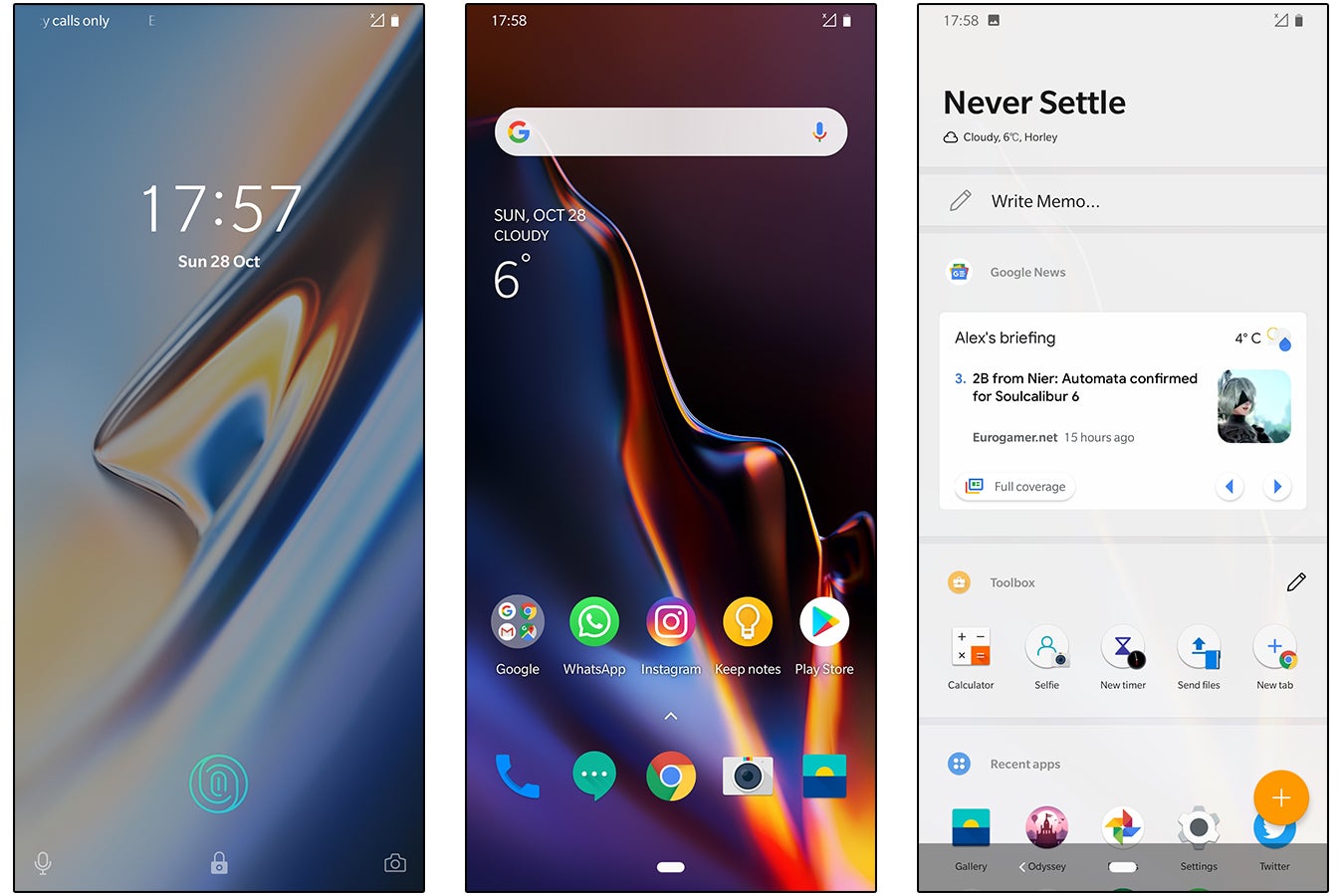
Thanks to the company’s proactive approach you can enjoy features native to Android Pie out-the-box, such as the new navigation buttons used by the Pixel 3, as well as OxygenOS-specific features like parallel apps and shortcut gestures.
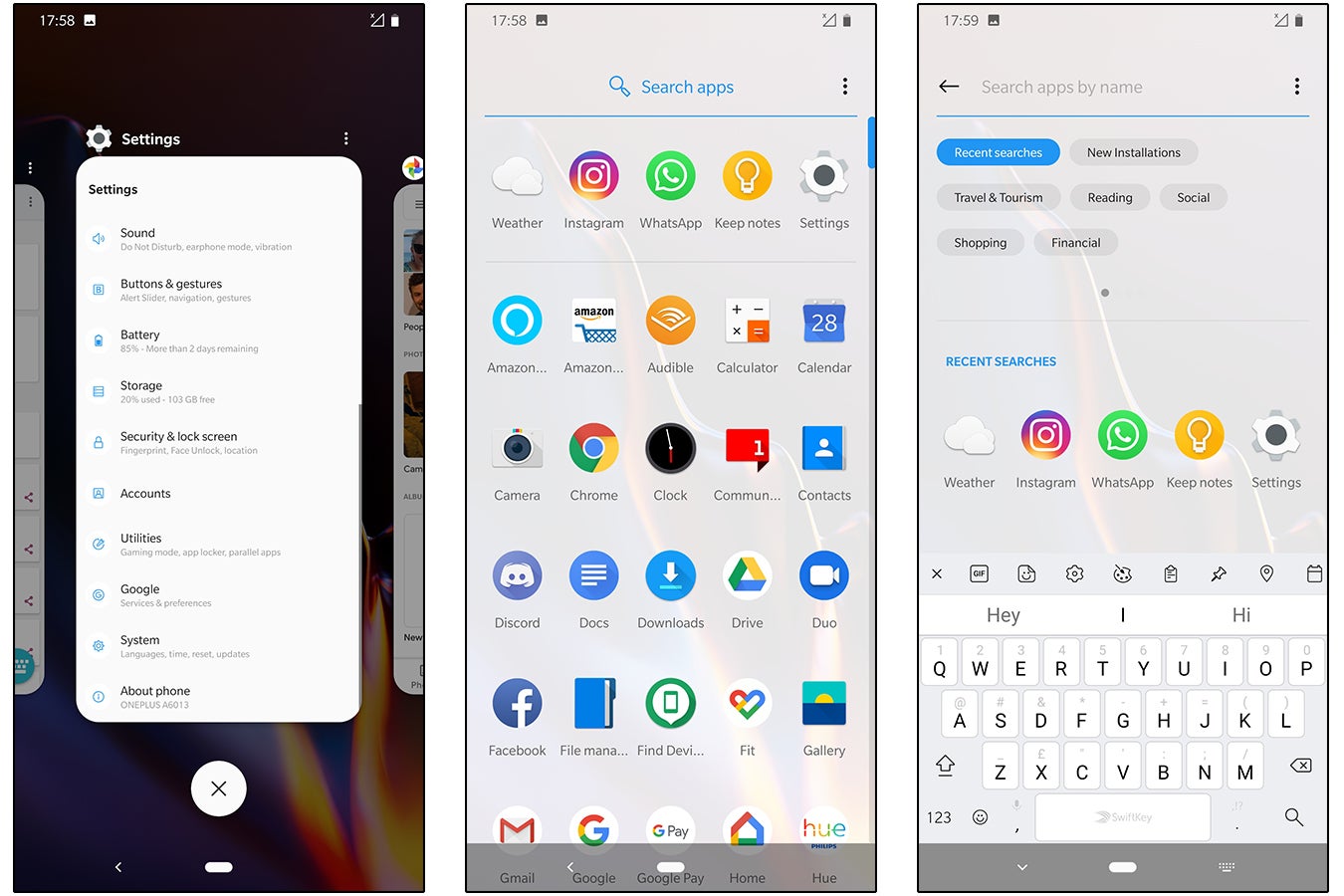
There are some long-standing but meaningful tweaks as part of OxygenOS that make a phone as large as the 6T that much more enjoyable and easy to use. You can customise quick-launch actions – activated by drawing various shapes on the lock screen – letting you jump to the camera, media playback or switch on the flashlight. You can also swipe down anywhere on a home screen to summon notifications – making one-handed use that much more approachable.
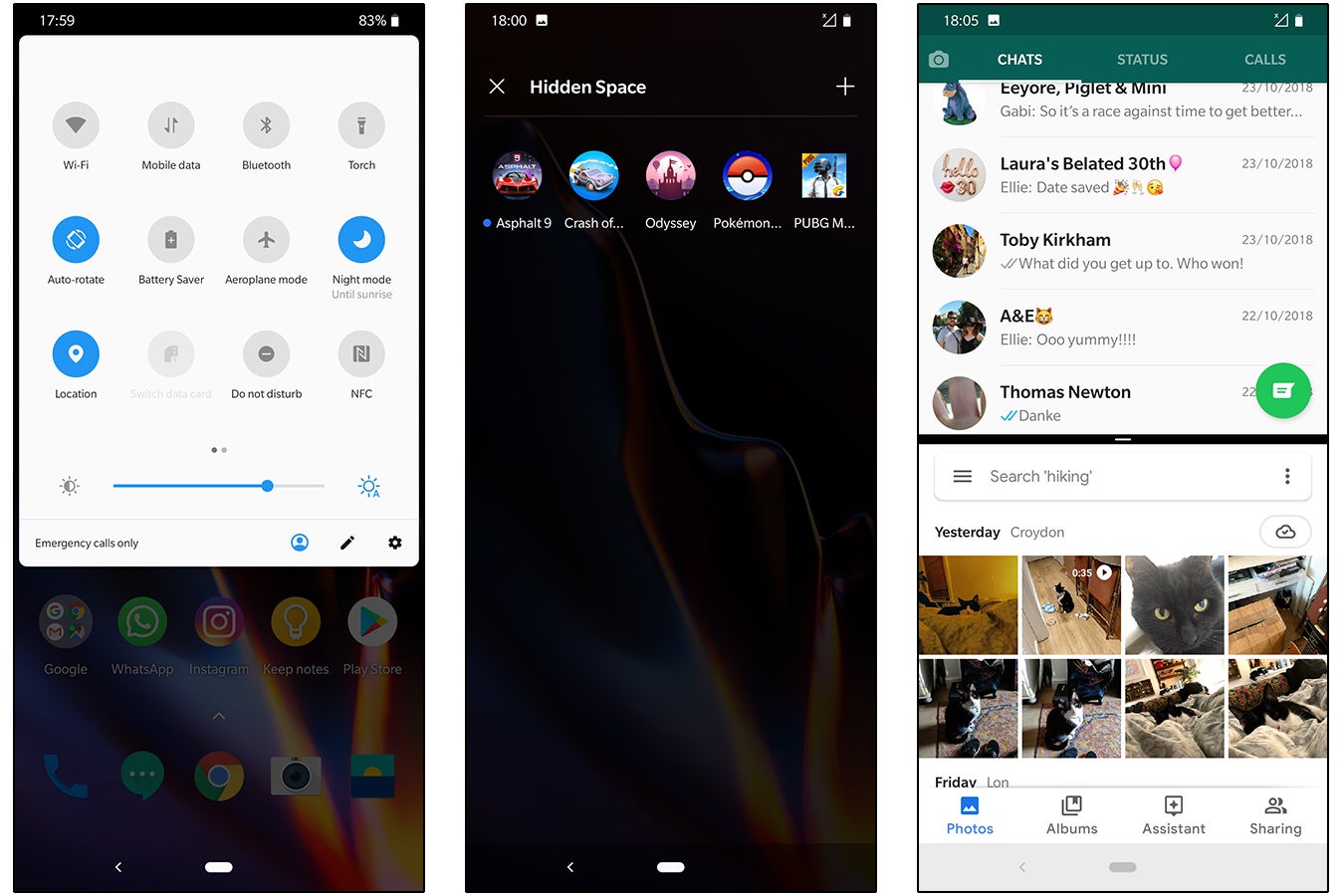
With most of the new functionality falling to the performance tools I’ve already mentioned, along with a handful of camera tweaks, the base software experience feels markedly the same as Android Pie on the OnePlus 6, but that’s no bad thing. The Shelf – one swipe to the left of your default home screen – is one of the best ways of handling widgets and quick actions that I’ve seen on Android, Hidden Space is an easy way to hide apps from prying eyes without making it too tricky to get back to them yourself and the rich search functionality of the apps tray works like a charm.
There’s little more I can say that I want from OnePlus’ take on Android here. I’d like a one-handed mode that actually shrinks the entire UI but I think I’m in the minority there, and I’m curious to try out the promised fingerprint-sensor based shortcuts feature but beyond that, perhaps a few fewer of OnePlus’ own apps stepping on Google’s toes wouldn’t hurt.
OnePlus 6T – Camera
The camera hardware at play here appears to be identical to that of its predecessor, with a dual 16/20-megapixel snapper taking point, rocking a respectably wide f/1.7 aperture and PDAF (phase detection autofocus), along with OIS (optical image stabilisation) and enlarged 1.22µm pixels on that main 16-megapixel sensor. There’s also a 16-megapixel front-facer which leverages EIS (electronic image stabilisation). It’s a promising hardware setup, albeit one we’ve all seen before, begging the question, what’s new?
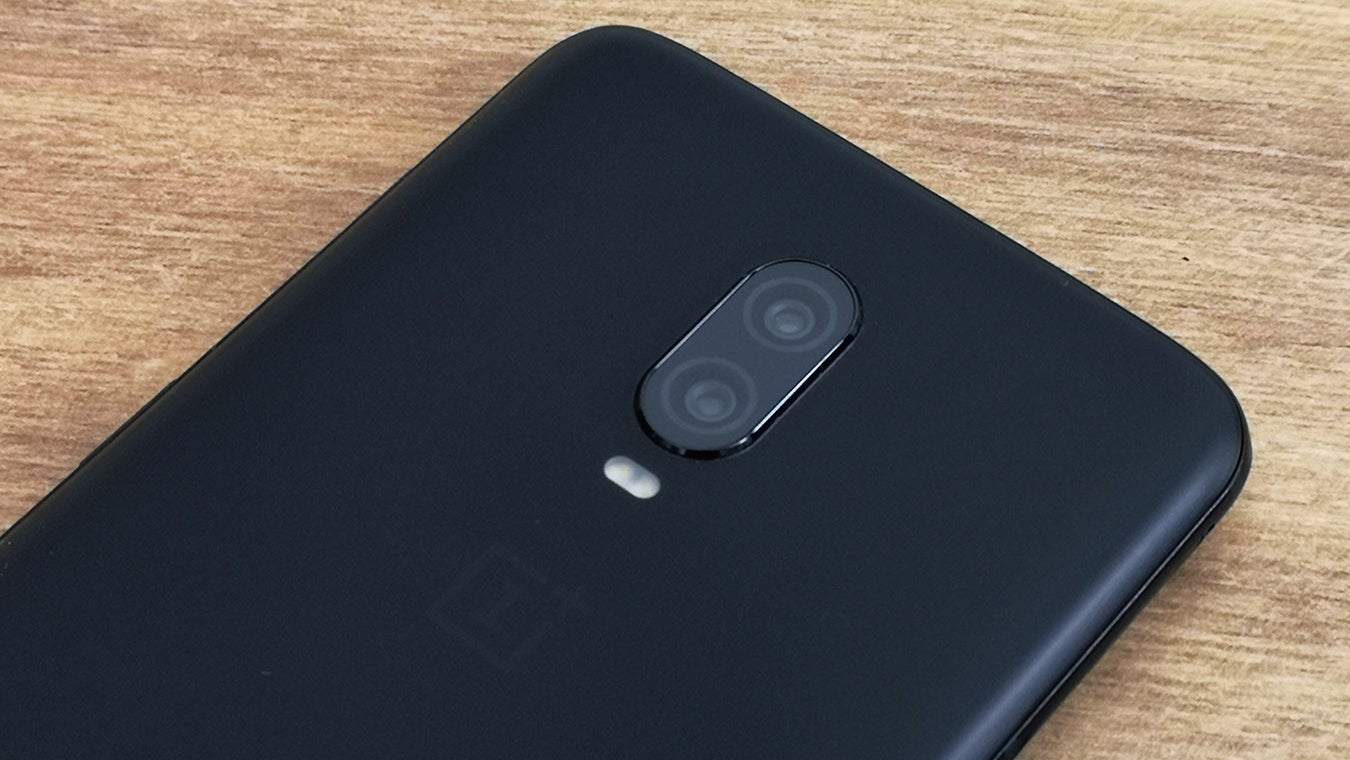
OnePlus has placed a focus on improving the HDR and low-light shooting capabilities of its new device’s snappers, while also adding in a handful of extra settings to play with. One nice addition is Auto Nightscape Detection, which automates the phone’s more advanced low-light photography mode when it detects that ambient light is hard to come by.
The promise of “industry-leading HDR shots” is one bold claim and naturally, I placed the 6T up against a handful of other top snappers to see just how good it really was.

At 100% crop, the 6T was one of the best for preserving detail throughout the scene.

The Huawei P20 Pro’s HDR was the most aggressive, it also has to be accessed as a separate mode, unlike on the 6T.

The iPhone XS lacked detail in the distance and miscoloured the image quite heavily compared to the rest of the group.
The Pixel 3 suffered from the weakest detail and harshest contrast of the bunch but still created a pleasing, natural-looking shot overall.

Based on this OnePlus 6 sample, it’s hard to see what tweaks OnePlus has really made to HDR on the 6T.
Moving onto Nightscape, it certainly proves it’s worth in the right situations; it brightens up cityscapes without issue but if hard light sources are in-frame, such as lamps, it struggles to balance things out, usually blowing out the brightest areas.

Off and on: Nightscape has its uses but brightened areas often suffer from apparent noise (above) and bright elements become blown out (below).

In natural light the 6T’s main snapper is undoubtedly capable, with decent exposure control, nice macro range, pleasing depth of field and good (although not perfect) edge detection when snapping portraits.

Even with auto-HDR, the limits of the camera’s dynamic range are clearly being tested.

Colour and bokeh are unquestionably pleasing when taking macro shots.


Details break down a little too much for my liking when cropping in but it wholly depends on the shot.
As for video, you can shoot up to 4K resolution at 60fps (limited to five minutes when using these settings) and the results aren’t half bad. It isn’t going to give the iPhone XS cause for concern, partly because of the tinny audio but partly because the image stability could also be improved too. Beyond that footage is pleasing and the option of slow-motion recording at up to 480fps (at 720p) is a feature unique to OnePlus.
OnePlus 6T – Battery Life
The OnePlus 6T’s 3700mAh power pack doesn’t quite top the 4000mAh behemoth found in the Huawei P20 Pro or the even more capacious 4200mAh offering used by its new sibling, the Mate 20 Pro, but it’s still a winner based on my experiences. It’s clearly equipped to handle a day and a half of frequent use and I imagine that for many it’ll stretch to two days between charges without too much trouble.
With 13 hours away from the wall plug and four hours of screen-on time, my OnePlus 6T finished the day at an even 50% charge. In that time I streamed 30 minutes of Netflix, which sapped 6% of the charge (with the screen brightness at half), while a 30 minute stretch of PUBG Mobile, running through multiple short, sharp arcade matches, took 8% out of the battery.
Fast Charge (formerly Dash Charge) is a big reason to buy a OnePlus. It’s been the best fast-charging standard out there for a while (although that’s starting to change) and the company has distilled the premise with simple elegance into the tagline, “a day’s power in half an hour”. With that claim in mind, I was somewhat skeptical this time around.
Increasing the capacity of the battery without increasing the rate of charge means that even Fast Charge might not be quick enough to juice up the sizeable cell inside the 6T. I was wrong to fret. A 30-minute stint at the wall plug took my OnePlus 6T from 39% to 86% charge (that’s 47%). Sure, it’s not the full 50% that I get through in my general day-to-day but its close enough. I could have switched off mobile data and Wi-Fi while it charged, turned on flight mode or switched the phone off altogether if I was desperate for a little more juice in that same time frame but I didn’t need to.
What I would say is that with the combination of OnePlus’ 20W charging tech and a battery the size of the 6T’s – the company’s promise has reached its limit. Going forward, if the brand still expects to tout a day’s use from 30 minutes charge time, it’ll either have to drop the capacity of the battery in its next phone or release an improved, even more rapid version of Fast Charge.
Why buy the OnePlus 6T?
While you could say that OnePlus has made some sacrifices in developing the OnePlus 6T, they all seem rather subjective. Sure it’s a slightly bigger, thicker, heavier phone than the 6 but if that means a bigger battery with better longevity is it really a loss?
The headphone jack’s absence is annoying for some but the phone comes with an adapter and the in-display fingerprint sensor might not have fit in the same footprint otherwise. The base price has been upped from £469 to £499 but you actually get twice the internal storage for less than what you would have paid for the same configuration on the OnePlus 6.
With all these factors, the OnePlus 6T serves itself up as a worthwhile upgrade. If you’re using a OnePlus 5 or even a 5T, the 6T is worth considering.
The camera still needs a little work to be truly competitive and OnePlus is facing stiffer competition than ever before but these are factors I’m sure the company is well aware of. So long as that’s the case, we should have good things to look forward to next year.
Pre-order: OnePlus 6T from £499 from OnePlus Store
Verdict
The OnePlus 6T brings new technology and worthwhile improvements to the table but still needs some tweaking.
How we test phones
We test every mobile phone we review thoroughly. We use industry standard tests to compare features properly and we use the phone as our main device over the review period. We’ll always tell you what we find and we never, ever, accept money to review a product.


